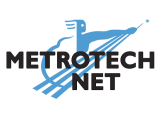In today’s highly competitive market, businesses are constantly searching for innovative ways to reach potential customers. One such cutting-edge technique is geofencing marketing, a location-based service that allows companies to engage with customers within a specified geographic area. This article explores the concept of geofencing marketing, its benefits, and how it can transform local advertising strategies.
What is Geofencing Marketing?
Geofencing marketing involves creating a virtual boundary around a physical location using GPS, RFID, Wi-Fi, or cellular data. When a mobile device enters or exits this defined area, it triggers a pre-set action, such as sending a notification, ad, or special offer to the user’s smartphone. This technique enables businesses to deliver highly targeted and timely messages to potential customers based on their real-time location.
How Does Geofencing Marketing Work?![]()
- Define the Boundary: Businesses start by defining a geofence—a specific geographic area that can range from a single building to an entire city block.
- Set Up the Triggers: Next, they determine what actions will be triggered when a user enters, dwells within, or exits the geofenced area. This could include sending promotional messages, displaying ads, or collecting data.
- Target the Audience: By integrating with mobile apps, businesses can target users who have opted in to location services and have relevant apps installed.
- Analyze and Optimize: Finally, businesses can analyze the performance of their geofencing campaigns to refine their strategies and improve engagement rates.
Benefits of Geofencing Marketing
- Enhanced Targeting: Geofencing allows businesses to target customers based on their current location, ensuring that the marketing messages are relevant and timely.
- Increased Engagement: By sending notifications when customers are near a business location, geofencing increases the likelihood of engagement and immediate action.
- Cost-Effective: Compared to broad-spectrum advertising methods, geofencing is more cost-effective as it focuses on a specific audience likely to be interested in the offering.
- Improved Data Collection: Geofencing provides valuable insights into customer behaviors and preferences, which can be used to refine marketing strategies.
- Personalization: Messages can be personalized based on the location and behavior of the user, creating a more tailored customer experience.
Practical Applications of Geofencing Marketing
- Retail: Retailers can attract nearby shoppers with special offers, flash sales, or personalized recommendations.
- Restaurants and Cafes: Dining establishments can send discounts or menu updates to passersby to increase foot traffic during slow periods.
- Events: Event organizers can engage attendees with real-time updates, schedules, and exclusive offers within the event vicinity.
- Real Estate: Realtors can send property listings and open house notifications to potential buyers in the area.
- Healthcare: Clinics can remind patients of appointments or notify them of available health services as they enter a geofenced area.
Conclusion
Geofencing marketing represents a dynamic shift in how businesses connect with their customers. By leveraging the power of location-based targeting, companies can deliver highly relevant and timely messages, driving customer engagement and boosting sales. As technology continues to advance, the possibilities for geofencing marketing will only expand, offering even more innovative ways for businesses to reach their local audience. Embracing this technology can provide a significant competitive edge in today’s fast-paced market landscape.


